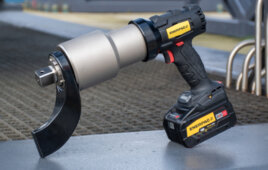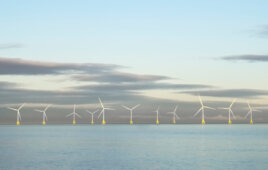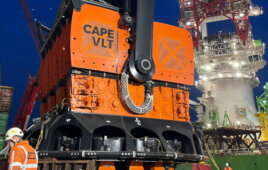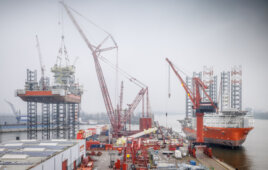Vessel operators seeking a foothold in the United States offshore wind market must invest early in well-established practices and proven vessel designs to meet customer demands and ensure the successful development of a domestic “Offshore Energy Support Vessel” (OESV) market.
This is according to class-leading OESV operator, Seacat Services, whose fleet of 14 specialist vessels, highly trained crews and shore-based operations team have continued to set the standard for offshore wind support in the United Kingdom and Europe over the past 7 years.
“Operating wind farm support vessels in the United States poses a number of unique challenges and requirements, but nonetheless U.S. OESV owners and operators will put themselves at a commercial advantage if they capitalize on what is becoming an increasingly proven recipe, shared by a number of leading operators worldwide,”
said Ian Baylis, managing director of Seacat Services.
The business has highlighted that maritime firms with plans to operate fleets of U.S.-flagged OESVs must balance innovation in areas such as vessel technology with a commitment to invest not only in crew training and identified best practice operational strategies, but also the wider maritime supply chain.
Seacat Services has identified a number of essential ingredients for successful operation and management of crew transfer and logistical support across these core areas:
Fleet and crew management: Delivering against wind farm owners’ KPIs (key performance indicators) of safety and vessel availability is contingent on robust in-house systems and back-office support. U.S. operators should seek to not only meet but exceed required safety standards via the adoption of International Saftey Management-approved Safety Management Systems.
Investment in digital fleet monitoring and crew management systems such as BareFLEET and CrewSmart ensures full transparency on technical availability and performance, alongside full compliance for documentation, inventories and certification.
Vessels: Though U.S. market conditions require vessel innovation, such as propulsion that meets EPA Tier 4 air quality requirements and Right Whale compliant hull forms, operators should capitalize on proven designs and technologies from the global sector. Designs such as the Chartwell 24 build on attributes that are familiar to wind farm owners, instilling confidence that vessels can deliver high levels of service and operate safely in testing conditions.
Independent validation of the technical capability and performance of vessels ensures that they will continue to meet the highest standards throughout their lifetime. Building and operating vessels to class standards involve regular refits that keep them running to their full capability.
Supply chain: Strong relationships are essential to de-risking the supply chain for vessel operators. OESV owners and operators in the U.S. should seek to engage and integrate with the local supply chain, building relationships with regional shipyards and further enhancing their local presence through apprenticeship schemes and other training opportunities.
Close collaboration with other maritime firms and vessel operators may also prove essential for dealing with unforeseen complications.
“The vessels themselves are just one part of the equation when it comes to effective crew transfer and logistical support — and investing heavily in personnel, systems and relationships from day one is the only way to ensure that a technically capable fleet successfully meets the demands placed on it,” Baylis said.
News item from Seacat Services
Filed Under: News, Services




